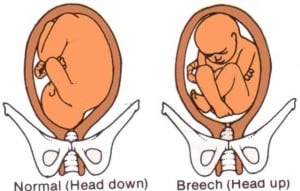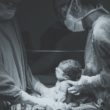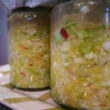Moxibustion for Breech
Moxibustion for Turning Breech Babies Around to the Head-First Position
According to the latest edition of the American Journal of Obstetrics and Gynecology 2009;201(3), 241-59, moxibustion is 36% more likely to turn a breech baby to the optimal position for birth than any other form of treatment, including no treatment.
‘This review pooled the results from studies published between 1980 and 2007 that looked at ways to turn fetuses that were not well-positioned for head-first birth into that position. The studies compared moxibustion to other ways to encourage the fetus to turn (hands-to-belly maneuvers, having the mother lie with her head lower than her feet, acupuncture).
‘Moxibustion involves burning the herb mugwort (Artemisia vulgaris) over an acupuncture point found on the outer corner of the smallest toenail. Seven studies presenting data from 1087 women were included in the analysis. All the women in the studies in this review were randomly picked to receive either moxibustion or one of the other methods, to strengthen confidence that any differences in experiences of study groups were due to the moxibustion.’
Combined results from the studies showed that the fetuses of women receiving moxibustion were 36% more likely to turn to ahead-first position than those who got other treatments or no treatment, and this result was statistically significant. The study found no differences in safety between moxibustion and the other methods.
Source: Vas J, Aranda JM, Nishishinya B, et al.Correction of nonvertex presentation with moxibustion: A systematic review andmeta-analysis.American Journal ofObstetrics and Gynecology 2009;201(3), 241-59.
If you are told your baby is presenting as breech, then having acupuncture between 33 and 36 weeks will give you the best opportunity to turn that baby. So don’t leave it too late as you’re little person needs some room to move! A 1998 Italian study found that 75% of breech babies turn using acupuncture between 33 and 36 weeks!
Acupuncture & Depression in Pregnancy
Study shows that acupuncture works for depression
According to the latest research, targeted acupuncture may offer women with major depression a safe and effective alternative to antidepressant medication.
A randomized controlled trial was conducted with 150 pregnant women and published in the March edition of Obstetrics and Gynaecology. To be elligable for the study they had to meet the Diagnostic and Statistical Manual of Mental Disorders (fourth edition) criteria for major depressive disorder, and score at least 14 on the 17-item Hamilton Rating Scale for Depression. They were then randomly assigned to three different groups: acupuncture treatment specific for depression, or one of two control groups; non-specific acupuncture or Swedish massage. They were treated over an eight-week period and received 12 treatments during that time.
Women treated with the depression-specific acupuncture had a 63% response rate after 12 sessions compared with a 44.3% response rate in 2 combined control groups. This result was statistically significant.
According to the study, antidepressant use during pregnancy doubled between 1999 and 2003, but many women are reluctant to take these medications because of safety concerns. In fact, in this particular study, 94% of the women involved expressed reluctance to take an antidepressant because of their pregnancy.
“Because there’s this concern about medication among pregnant women and their physicians, it’s important to find an alternative,” said Dr. Rachel Manber, PHD, who led the study.
SOURCE: Obstetrics & Gynecology VOL. 115, NO. 3, MARCH 2010








